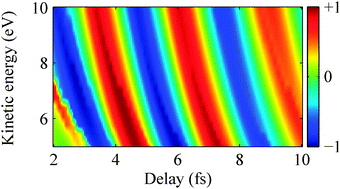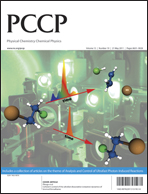A semi-classical model of attosecond electron localization in dissociative ionization of hydrogen
Abstract
In the development of attosecond molecular science, a series of experiments have recently been performed where ionic fragment asymmetries in the dissociative ionization of H2 into H+ + H and that of D2 into D+ + D were used to uncover electron localization processes that occur on the attosecond and few-femtosecond timescale. Electron localization was observed both in strong-field dissociative ionization using carrier envelope phase-stable few-cycle laser pulses [Kling et al., Science, 2006, 312, 246] and in a two-color extreme ultra-violet + infrared attosecond pump–probe experiment [Sansone et al., Nature, 2010, 465, 763]. Here we show that the observed electron localization can be well understood using a semi-classical model that describes the dynamics in terms of quasi-static states that take the interaction of the molecule with the laser field instantaneously into account. The electron localization is shown to be determined by the passage of the dissociating molecule through a regime where the laser–molecule interaction is neither diabatic nor adiabatic.

- This article is part of the themed collection: Analysis and Control of Ultrafast Photon-Induced Reactions

 Please wait while we load your content...
Please wait while we load your content...